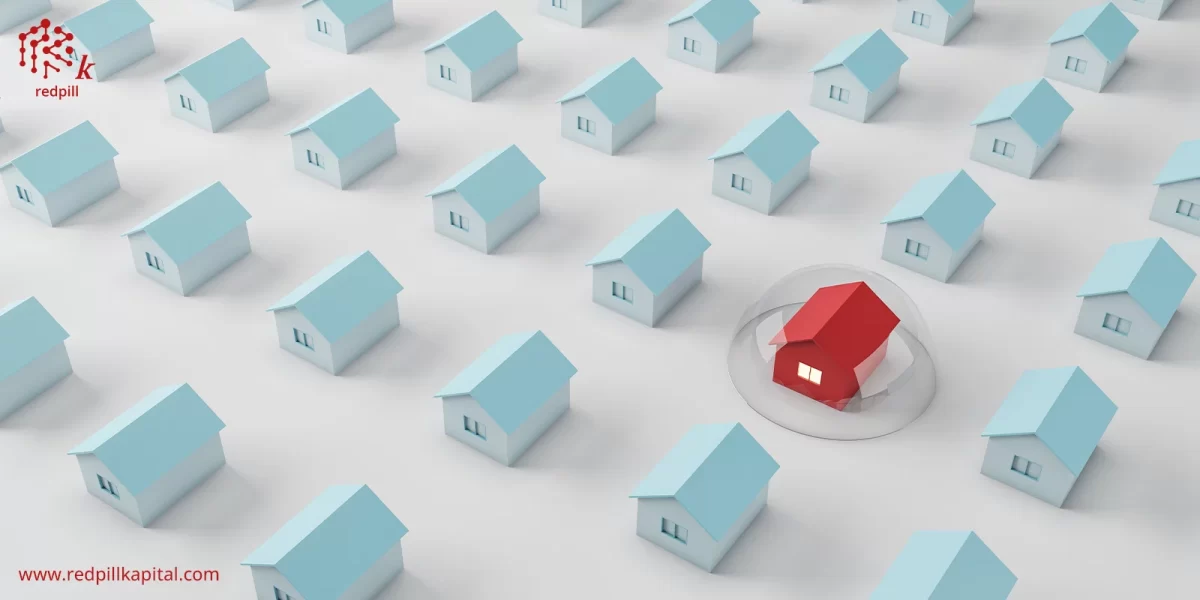Pursuing a medical degree is often at the top of most students’ minds as it offers a chance to impact people’s lives positively while enjoying a fruitful career.
However, the cost of medical education has soared to unprecedented levels in recent years. Studies show that the average medical student graduates with tuition debt north of $250,000, which they are struggling to pay off.
With medical school graduates entering the workforce burdened by financial strain, this affects the career choices and quality of life for new doctors and their long-term earning potential.
In this blog post, we will examine the escalating costs of medical education and analyze its impact on doctors’ earnings and potential consequences on the healthcare industry.
The Rising Cost of Medical School
During the summer of 1957, Dr. Warren D. Widmann, an Emeritus Professor at Columbia University, had annual tuition fees of at most $850.
He paid his first year’s tuition for the School of Medicine and saved surplus funds as a waiter at a New Jersey shore hotel. He completed his medical education without incurring student debt.
In contrast to Dr. Widmann’s era, current medical school tuition fees have experienced a more significant increase than both wages and the overall cost of living.
According to a study by Education Data, the average annual tuition for medical school is rising at approximately $1,500 per year. Consequently, the total cost of a four-year medical degree is growing by $6,000 annually, placing substantial financial baggage on aspiring physicians.
As of 2024, the average total cost of medical school is $235,827, while the median cost of attending a medical college exceeded $270k in 2019. This figure represents an annual expenditure of $58,968, which includes tuition, fees, and health insurance.
It’s important to note that these costs do not include additional year-specific expenses such as USMLE exam fees and laboratory charges.

Inflation-adjusted median education debt and cost of attendance (COA) over four years in constant 2019 dollars using the Consumer Price Index for all Urban Consumers (CPI-U).
Source: https://store.aamc.org/downloadable/download/sample/sample_id/368/
Student debt accumulation: Now vs then
Three decades ago, medical students graduated with an average student loan debt of $32,000. Now, the average medical school graduate has accumulated $250,995 in total student loan debt.
This figure is four times the average debt amassed by college graduates in other disciplines, underscoring the significant financial challenge faced by aspiring physicians. As a result, 73% of medical school graduates are burdened with educational debt.
The median four-year cost of attending medical school has increased by approximately 20% since 2009. Notably, the tuition for public medical schools has risen at a rate of 31% faster than private medical schools.

Median COA and education debt of medical school graduates in public or private schools in constant 2019 dollars.
Source: https://store.aamc.org/downloadable/download/sample/sample_id/368/
The Impact of Student Debt on Doctors’ Earnings
Total student loan debt in New York has increased by an average of 8.5% annually since 2003, surpassing the average annual growth rate of 3.1% in mortgages during the same period.
Moreover, student loan debt per capita has experienced triple-digit growth in every state since 2003. While New York’s increase of 335.2% over the past 18 years is noteworthy, it ranks lower than most other states, occupying 40th position nationally.

Per capita debt by component, New York vs the nation.
Source: https://www.osc.ny.gov/files/reports/pdf/household-debt-in-new-york-state.pdf
The trend has predominantly affected doctors as they take on the most student debt. A recent survey by Laurel Road highlighted the high student debt-to-income ratios many healthcare professionals face, forcing them to reassess their financial priorities.
Healthcare professionals reported an average pre-tax income of $323,693 while carrying an average student loan debt of $188,317. Early-career physicians, particularly those from Gen Z, faced even more severe financial constraints, with student loan debt as high as 64% of their $183,873 average annual salary.
When asked about the projected repayment timeline for their student loans, the doctors estimated it would take them approximately eight years. As the student debt burden rose, 74% of physicians indicated reallocating funds to meet payment obligations.
To alleviate financial pressures, 94% of doctors reported making adjustments in various areas, including:
- Reducing travel (35%),
- Dining out or ordering in (30%),
- Retirement savings (28%).
Additionally, 77% of doctors acknowledged postponing certain financial goals for 2024, such as purchasing a new car (33%), buying a house (33%), or embarking on a dream vacation (32%).
While physicians invest substantial time and financial resources in their education, resulting in significant student loan debt upon graduation, their earning potential often does not fully materialize until later in their careers.
The impact of student debt on doctors’ decision-making regarding specialties and practice locations
Research indicates that comparatively low compensation is among the factors deterring medical students from pursuing certain specialties.
A recent study revealed a 40% decline in the internal rate of return between 1989 and 2019 for a career in orthopedic surgery, long considered one of the most lucrative medical specialties. The high cost of medical education was identified as the primary catalyst for this decline.
Between 1995 and 2004, primary care physicians’ incomes grew by 21.4%, while those of specialist physicians rose by 37.5%. In 1951, 50% of all physicians were practicing internal medicine and primary care. By 2015, only 33% of all physicians were in general internal medicine or primary care fields.

Change in specialization between 1951 and 2015
Source: https://www.amjmed.com/article/S0002-9343(17)30134-1/pdf
The declining number of U.S. medical school graduates choosing less financially rewarding specialties has contributed to critical shortages in these fields. For instance, the American Academy of Pediatrics (AAP) has expressed concerns that some pediatric subspecialties are recording 20-40% fewer applicants than positions.
Although the growth rate of primary care physicians’ (PCP) compensation outpaced that of specialists between 2008 and 2017 (1.6% vs 1.2%), with the average annual salary for primary care physicians increasing significantly to nearly $250,000 after the enactment of the Affordable Care Act, specialists’ salaries grew to about $400,000.
Despite acknowledging the high job satisfaction of pediatricians, the AAP reported that only about 33% of graduating pediatric residents planned to pursue a career in primary care in 2020, compared to over 66% in 1997.
The same report indicated a twofold increase in the average educational debt of graduating pediatric residents during this period, while their average starting salaries barely kept up with inflation.
The Relationship between Medical School Debt and Physician Burnout
Medical students with higher debt levels are more likely to experience stress and anxiety compared to their peers with less debt. Internal medicine residents burdened by high debt are also more prone to burnout symptoms and tend to score lower on their in-training examinations than their colleagues without debt.
One survey revealed that 32% of students always or frequently worried about debt. In the Laurel Road survey, 75% of doctors repeatedly or constantly experienced anxiety when reviewing their student loan balance.
Financial pressures often motivate students to pursue more competitive specialties, which offer higher compensation, a better lifestyle, or both. However, this creates a vicious cycle as these specialties often entail increased workloads, further contributing to the likelihood of burnout.
A study revealed a correlation between every $50,000 increment in medical student loan debt and an increase in self-reported stress. In another study, 89% of the respondents agreed or strongly agreed that financial stress is correlated with burnout.
While a previous study of junior anesthesiology physicians did not find a relationship between educational debt and burnout, it did associate debt with higher rates of distress and depression.
The huge debts impact medical graduates’ ability to navigate medical training, manage stress and burnout, and make informed professional and personal life choices. These challenges have far-reaching consequences, affecting other sectors of the healthcare system and economy.
The Association of American Medical Colleges (AAMC) forecasts a potential physician shortage ranging from 37,800 to 124,000 by 2034 for both primary and specialty care physicians unless a comprehensive approach is implemented to address the stressors contributing to student burnout.
Strategies for Reducing the Cost of Medical Education
A recent study revealed that ten years after graduation, approximately 40% of bachelor’s degree holders continue to carry outstanding student loan debt. There are several solutions that students, physicians, and the government can take to reduce the impact of medical student debt:
1. Government interventions
As a band-aid solution, governments should consider increasing funding or reducing the student loan burden for medical schools and residency programs as they keep searching for long-term solutions.
One way of easing the burden is by analyzing debt-to-income ratios, which offer a more nuanced approach to targeting student loan relief than focusing solely on debt or income.
Debt typically increases as family income and wealth decreases, so lower-income families generally borrow more, highlighting the regressive nature of student debt financing. Additionally, race and gender determine incomes, further exposing systemic inequalities.
Periodic balance adjustments for borrowers with persistently high debt-to-income ratios are the most effective way to minimize financial hardship.
Unlike one-time cancellation after 20-25 years of repayment as promised by income-driven repayment plans (IDR), balance adjustments would provide incremental debt cancellation, bringing balances to more manageable levels.
2. Consider state and federal loan forgiveness programs
For individuals aspiring to serve in public health settings, loan forgiveness programs can provide financial relief. The National Health Service Corps (NHSC) offers up to $120,000 in repayment assistance in the Student-to-Service program for those who undertake primary care specialties.
The NIH provides up to $50,000 annual repayment of qualified educational debt for a researcher in bio-behavioral or biomedical research careers.
Further, the Public Service Loan Forgiveness (PSLF) program cancels the remaining balances of Direct Loans for a qualifying, full-time public service employer after 120 qualifying monthly payments.
3. Advocacy
To alleviate the financial burden on medical students, residents, and fellows, you should advocate for legislation to permit interest-free deferment on their student loans during service in medical internship, residency, or fellowship programs.
Additionally, push for the conversion of currently unsubsidized Stafford, Direct PLUS, and Graduate PLUS loans to interest-free status for the duration of undergraduate and graduate medical education.
4. Tax credits and deductions
Graduate medical students can explore educational tax credits and deductions, such as the Lifetime Learning Credit, to reduce their tax liability. Additionally, student loan interest is tax-deductible.
5. Consolidate loans
Many physicians have student debt distributed across five or more loans. Consider consolidating your medical student loans into a single new loan to simplify your debt overview and establish a single point of contact for easier management.
If you have federal loans, you may be able to consolidate them with the U.S. Department of Education. However, for competitive interest rates or a combination of federal and private loans, private lender consolidation may be an option.
Note that consolidating with a private lender may result in losing federal benefits, including access to IDR or eligibility for PSLF.
6. Private lender refinancing
This option involves obtaining a new loan from a private lender to replace your existing loan(s). The lender repays your existing loan(s) and establishes a new one. The new loan may offer a lower interest rate and reduced monthly payments.
Just remember you would lose federal benefits, so weigh the pros and cons of this option before making your move.
7. Apply for grants and scholarships
On admission to college and submission for Free Application for Federal Student Aid (FAFSA), you may be eligible for scholarships and grants without additional applications.
Additionally, consider exploring external scholarships offered by organizations, churches, and your parents’ or guardians’ employers. If you have an employer, find out if they offer scholarships or tuition assistance.
8. Return excess student loans
You may receive a surplus loan beyond your tuition costs. If you do not require these excess funds, you can request your college return them to the lender.
9. Military scholarships
The Health Professions Scholarship Program presents a compelling opportunity if you intend to pursue a career in military medicine. This scholarship covers your entire tuition, provides monthly stipends, and reimburses you for books and supplies. In exchange, you commit to serving in the military following graduation.
10. Utilize AAMC resources
The AAMC’s FIRST (Financial Information, Resources, Services, and Tools) program provides a wealth of information for applicants, students, and residents. This includes videos and webinars on topics such as student loan repayment and management during residency, as well as online resources on financing medical school and strategies for affordability.
Conclusion
The excessive rise in the cost of medical education is negatively affecting doctors, affecting their future earnings and career choices.
The burden of student debt is not just a personal challenge but a systemic issue that could influence the broader healthcare system, potentially affecting the quality of care and access to medical professionals.
While the current situation poses significant challenges, there are avenues for reform and support that could alleviate the pressure on future doctors. These include policy changes, financial aid improvements, innovative funding models, and debt repayment programs.
Addressing these issues is crucial for sustaining a robust and effective healthcare system. Prioritizing the financial well-being of healthcare providers is an investment that supports their ability to deliver high-quality care to all.



















